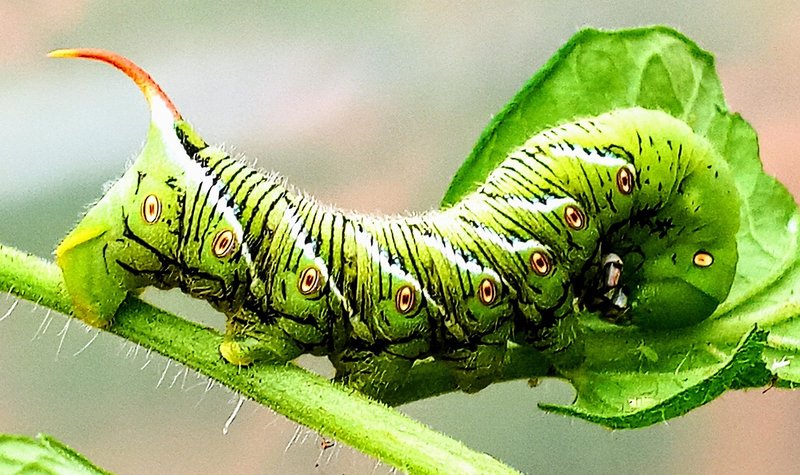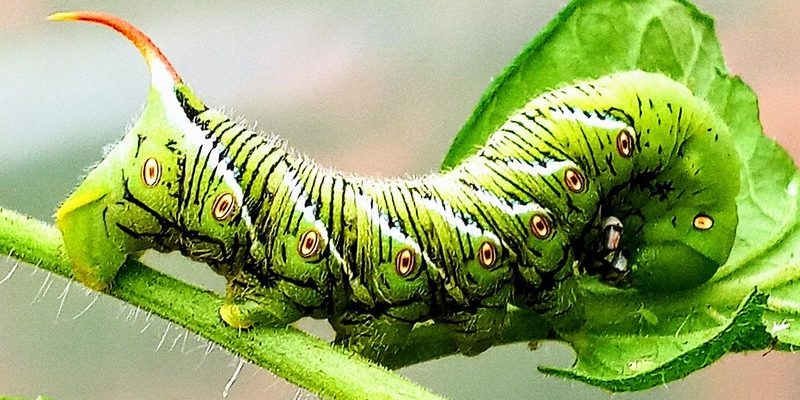
Hornworms are the larvae of hawk moths and can grow up to four inches long. Just think of them as the “teenagers” of the garden world—big, hungry, and not always considerate of their surroundings. They can cause harm quickly and in large numbers, making them a concern for market gardeners. But understanding these pests not just helps in managing them but also affects the bottom line.
If you’re wondering how hornworms can impact your garden’s profitability, stay with me. We’ll explore their life cycle, how they damage crops, and ways to manage them effectively, all while keeping an eye on your economic interests.
Understanding Hornworms: A Brief Overview
Before diving into their economic impact, it’s essential to get familiar with hornworms themselves. There are a couple of main types, including the **tobacco** and **tomato hornworms**. Each has its own life cycle and preferred plants, but the outcome is similar: damage to crops.
Hornworms hatch from eggs laid on the undersides of leaves. Once they emerge, they ravenously consume plant foliage. They can strip a plant clean in just a few days, leading to stunted growth and decreased yields. And if left unchecked, they can destroy entire patches of precious crops in no time.
This is where things get serious for market gardeners. Consider this: if a gardener loses even a small section of a tomato crop to hornworms, the financial ramifications can ripple through the entire season. That’s a loss not just in produce but also in income, labor costs, and future planting plans.
The Economic Consequences of Hornworm Infestations
So, what does it really cost? Hornworm infestations can lead to significant economic losses for market gardeners. When these pests invade, they can affect the following:
- Yield Reduction: A significant portion of a crop can be lost, which directly lowers the amount of produce sold.
- Increased Labor Costs: Gardeners may spend extra time and effort managing these pests, requiring more resources.
- Crop Quality: Infestations can lead to poor-quality produce, affecting sales and reputation.
Let’s break this down further. Picture a market gardener who typically harvests 200 pounds of tomatoes per week. If hornworms halve that yield due to infestation, there’s a direct loss of sales and customer trust. These factors make it crucial to monitor their populations closely.
Management Strategies: Staying Ahead of Hornworms
Getting rid of hornworms isn’t rocket science, but it does require diligence. There are several strategies market gardeners can employ to manage these pests effectively:
- Cultural Practices: Crop rotation and maintaining diverse plantings can disrupt the hornworm life cycle.
- Handpicking: Checking plants regularly and removing hornworms by hand is a tried-and-true method.
- Biological Controls: Introducing beneficial insects like parasitic wasps can help keep hornworms in check.
Honestly, combining these strategies can make a world of difference. For instance, planting trap crops—plants that attract hornworms away from main crops—can keep the pests occupied and reduce damage. It’s all about staying proactive rather than reactive.
Impact on Consumer Prices and Market Demand
As a market gardener, the presence of hornworms not only affects your crop but can also influence local market prices. When supply diminishes due to infestations, prices may rise, impacting consumers as well.
Consider a local farmer’s market where several gardeners sell tomatoes. If one farmer experiences a significant hornworm issue, their reduced supply could mean higher prices for all, as customers shift their focus to available competitors. This could create tension in the market and strain relationships among local farmers.
Plus, if customers associate a specific market with low-quality or damaged produce, they may decide to purchase elsewhere. It’s a ripple effect that can affect everyone involved, from producers to consumers.
Long-term Economic Sustainability and Hornworm Management
Sustainability is key in market gardening, especially when addressing issues like hornworms. By implementing solid pest management strategies early on, gardeners can ensure long-term viability and profitability. They can:
- Invest in Education: Understanding pest life cycles, like that of the hornworm, helps in planning better.
- Utilize Organic Solutions: Chemical-free methods not only keep crops safe but also appeal to growing consumer interests in organic produce.
- Build Community Knowledge: Sharing experiences and solutions with other local gardeners can lead to better strategies and reduced infestations overall.
Building a sustainable approach not only benefits individual gardens but also strengthens the local market. When gardeners work together to combat common issues like hornworm infestations, they create a healthier ecosystem for everyone involved.
The economic impact of hornworms in market gardens is more than just about losing a few leaves here and there. It influences yield, pricing, and overall market dynamics. By recognizing these challenges and employing effective management strategies, gardeners can defend their crops and maintain their livelihoods.
So next time you’re tending to your plants, keep an eye out for those sneaky little caterpillars. With the right strategies in place, you can protect your investment, keep your garden flourishing, and ensure that your economic impact remains positive. After all, a healthy garden leads to a thriving market, and that’s a win-win for everyone involved.

